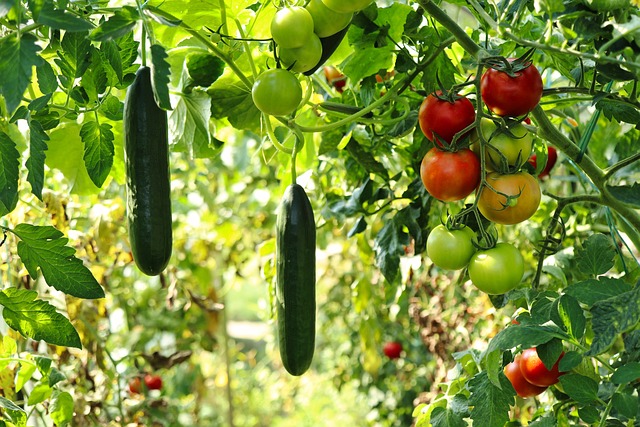Growing Fun-loving Fresh Cucumbers in Your Backyard in 2025
Growing Fresh Cucumbers in Your Backyard
Growing cucumbers at home can be a rewarding experience, and it’s quite straightforward. Here’s a simple guide to help you get started: https://mrpo.pk/strawberries/

2 . Choosing the Right Cucumber Variety
When deciding to cultivate cucumbers in your backyard, the first step is selecting the right cucumber variety that suits your needs and the climate of your region. Popular choices include slicer cucumbers for salads, pickling cucumbers for making pickles, or burpless cucumbers for a fresh snack.
3 . Choose the Right Spot: Cucumbers need full sun and well-drained soil. Find a sunny location in your garden where they won’t be shaded, especially in the afternoon.
4 . Prepare the Soil: To ensure a successful cucumber harvest, it’s crucial to prepare the soil properly. Cucumbers thrive in well-drained, nutrient-rich soil with a pH level between 6.0 and 7.0. Add compost or organic matter to improve soil quality and provide essential nutrients for the plants. Work the soil to a depth of 6 to 8 inches and mix in aged manure or compost to enrich it.
5 . Sow the Seeds: Plant cucumber seeds about 1 inch deep into the soil. If you’re planting vining varieties, space them about 3 to 5 feet apart. For bush varieties, which are suitable for containers, space them about 1 foot apart.
Plant cucumber seeds directly in the soil or start them indoors in biodegradable pots before transplanting them outside. Make sure to space the seeds or seedlings adequately to allow room for growth and airflow, which helps prevent diseases.
6 . Providing Optimal Growing Conditions
Cucumbers require full sun exposure to thrive, so choose a location in your backyard that receives at least 6-8 hours of sunlight per day. Ensure consistent watering to keep the soil evenly moist but not waterlogged, as overwatering can lead to root rot. Cucumbers need consistent moisture. Water deeply and regularly, especially during fruit set and growth.
7 . Support with a Trellis: For vining varieties, provide a trellis or fence for support. This keeps the fruits off the ground and can lead to a cleaner and more bountiful harvest.
8 . Mulch: Apply organic mulch around the plants to retain moisture, regulate soil temperature, and reduce weed growth.
9 . Fertilize: Use a balanced fertilizer to encourage growth. Be careful not to over-fertilize, as this can lead to more leaves and fewer cucumbers.
10 . Watch for Pests: Keep an eye out for common cucumber pests like cucumber beetles and aphids. Use appropriate methods to control them if necessary.
11 . Harvest: Pick cucumbers when they are medium-sized, firm, and green. Regular harvesting encourages the plant to produce more fruit.
12 . Enjoy Homegrown Fresh Cucumbers
Growing cucumbers in your backyard can be a rewarding experience, providing you with fresh, flavorful produce right at your doorstep. Whether you use them in salads, or pickles, or enjoy them as a healthy snack, homegrown cucumbers are a delicious addition to any meal.
13 . Cucumber plants can be affected by a variety of pests. Here are some common ones and how to manage them:
- Cucumber Beetles: These beetles can be controlled by spraying neem oil or chemical pesticides onto cucumber leaves1.
- Aphids: Aphids can be managed by using insecticidal soap or neem oil. A strong jet of water can also knock them off the plants2.
- Cabbage Loopers: These caterpillars can be controlled by releasing beneficial insects like parasitic wasps, handpicking, or applying Bacillus thuringiensis2.
- Spider Mites: Spider mites can be dealt with by using miticides or horticultural oils1.
14. Organic Methods to Control Cucumber Pests, Effective Strategies:
- Neem Oil: A natural pesticide, neem oil can be sprayed on cucumber plants to deter pests like aphids and cucumber beetles.
- Insecticidal Soap: This can be used to treat infestations of soft-bodied insects such as aphids and whiteflies.
- Diatomaceous Earth: Sprinkling diatomaceous earth around the base of plants can help control slugs and other crawling pests.
- Beneficial Insects: Introducing beneficial insects like ladybugs, lacewings, and parasitic wasps can help control aphid populations.
- Row Covers: Floating row covers can protect young plants from pests while allowing light and water to pass through.
- Hand Picking: Regularly inspecting plants and hand-picking pests like beetles and caterpillars can be effective.
- Companion Planting: Planting certain flowers and herbs that repel pests can help protect cucumber plants.
Remember, the key to organic pest control is regular monitoring and early intervention to prevent large infestations. Always test a small area of the plant before applying any treatment to the entire plant.
Explore the world of backyard gardening and cultivate your fresh cucumbers to enjoy the taste of homegrown goodness. Happy gardening!
Conclusion
In conclusion, cucumbers are not only tasty and versatile but also a healthy addition to any meal. By trying out these creative cucumber recipes, you can enjoy the fresh and crisp flavour of cucumbers in new and exciting ways. Whether you’re looking for a light salad, a healthy snack, or a refreshing drink, there is a cucumber recipe for everyone to enjoy. So why not pick up some cucumbers on your next grocery trip and get cooking? Your taste buds will thank you!


